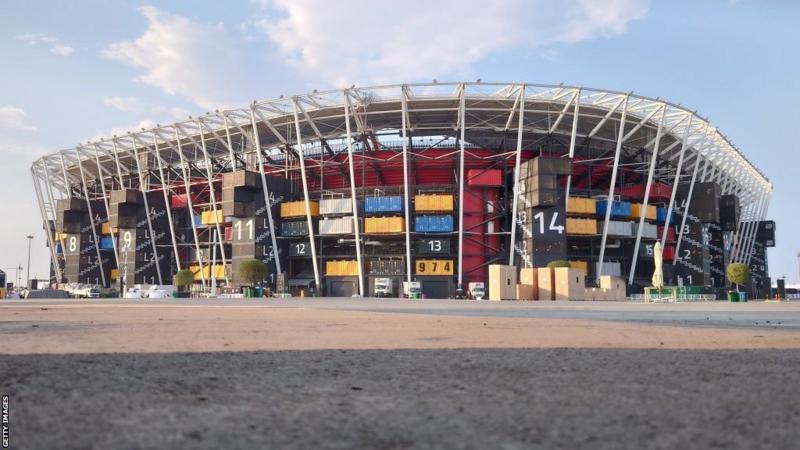El estadio 974, llamado así por el código de marcación internacional de Qatar y la cantidad de contenedores de envío utilizados en su construcción, fue uno de los siete nuevos terrenos construidos para el torneo, mientras que un octavo fue remodelado ampliamente.
Toda la estructura de acero del Estadio 974 se puede reutilizar para otra Copa del Mundo o evento deportivo importante, ya sea como una sede del mismo tamaño o como varias instalaciones más pequeñas.
Qatar llamó al estadio su «faro de sostenibilidad» como parte de su compromiso de ofrecer la primera Copa del Mundo neutral en carbono.
Además de siete nuevos estadios, Qatar tiene un nuevo aeropuerto, sistema de metro, carreteras y alrededor de 100 nuevos hoteles, pero se ha enfrentado a un intenso escrutinio y críticas por la forma en que ha tratado a las decenas de miles de trabajadores migrantes utilizados para construir la infraestructura.
Entonces, ¿qué tan sostenible es el proyecto Stadium 974? ¿Y dónde y cuándo se reutilizará el estadio?
¿Un vistazo al futuro?
Los trabajadores de la construcción se trasladaron al sitio el viernes 9 de diciembre para comenzar a desmontar el Estadio 974.
El Estadio 974 con capacidad para 44.089 personas, ubicado en el paseo marítimo de Doha, cuenta con una estructura de acero modular y contenedores de envío multicolores, que se pueden ver desde el exterior del estadio y alberga baños y puestos de comida y bebida.
Fue el único estadio construido para la Copa del Mundo sin aire acondicionado, por lo que solo acogió partidos nocturnos, que culminaron con la victoria de Brasil en octavos de final sobre Corea del Sur el 5 de diciembre.
traducido de www.bbc.com
Stadium 974: What happens next to the first temporary World Cup stadium?
By Jack SkeltonBBC Sport
Last updated on25 minutes ago25 minutes ago.From the sectionWorld Cup
The World Cup’s first temporary stadium is being dismantled after hosting seven matches in two weeks at Qatar 2022.
Stadium 974 – named after Qatar’s international dialling code and the number of shipping containers used in its construction – was one of seven new grounds built for the tournament, while an eighth was extensively redeveloped.
The entire steel structure of Stadium 974 can be repurposed for another World Cup or major sporting event as either a venue of the same size or several smaller facilities.
Qatar called the stadium its «beacon of sustainability» as part of its pledge to deliver the first carbon neutral World Cup.
As well as seven new stadiums, Qatar has a new airport, metro system, roads and about 100 new hotels – but has faced intense scrutiny and criticism over the way it has treated the tens of thousands of migrant workers used to build the infrastructure.
So how sustainable is the Stadium 974 project? And where and when will the stadium be reused?
A glimpse of the future?

The 44,089-capacity Stadium 974 – located on Doha’s waterfront – features a modular steel frame and multicoloured shipping containers, which can be seen from the outside of the stadium and house toilets and food and drink stalls.
It was the only stadium built for the World Cup without air conditioning, so hosted only evening matches, culminating in Brazil’s last-16 victory over South Korea on 5 December.
bbc.com


